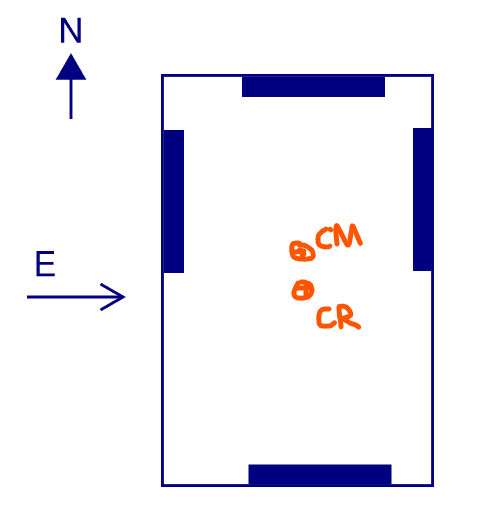Hi everyone,
Please let me know if my understanding below is correct. Assume the sketch is a one-story concrete building, and the relative rigidity of the walls parallel to the force is equal.
The seismic force should go through the center of mass tributary to the (roof) diaphragm level. For a layout like this, the center of the effective mass is skewed to the north as the walls normal to the force are located up there. Thus, there would be an (small) eccentricity between the center of mass and the center of rigidity.
Also, the weight of the walls parallel to the force should be excluded from the effective seismic weight in the direction under consideration - because the inertia force on these walls does not go through the diaphragm. To design these walls, I need to include the diaphragm shear located on the top of the wall and the inertia force (Cs x weight of wall) located at the mid-height of the wall.

Thanks,
Jayson
Please let me know if my understanding below is correct. Assume the sketch is a one-story concrete building, and the relative rigidity of the walls parallel to the force is equal.
The seismic force should go through the center of mass tributary to the (roof) diaphragm level. For a layout like this, the center of the effective mass is skewed to the north as the walls normal to the force are located up there. Thus, there would be an (small) eccentricity between the center of mass and the center of rigidity.
Also, the weight of the walls parallel to the force should be excluded from the effective seismic weight in the direction under consideration - because the inertia force on these walls does not go through the diaphragm. To design these walls, I need to include the diaphragm shear located on the top of the wall and the inertia force (Cs x weight of wall) located at the mid-height of the wall.

Thanks,
Jayson
